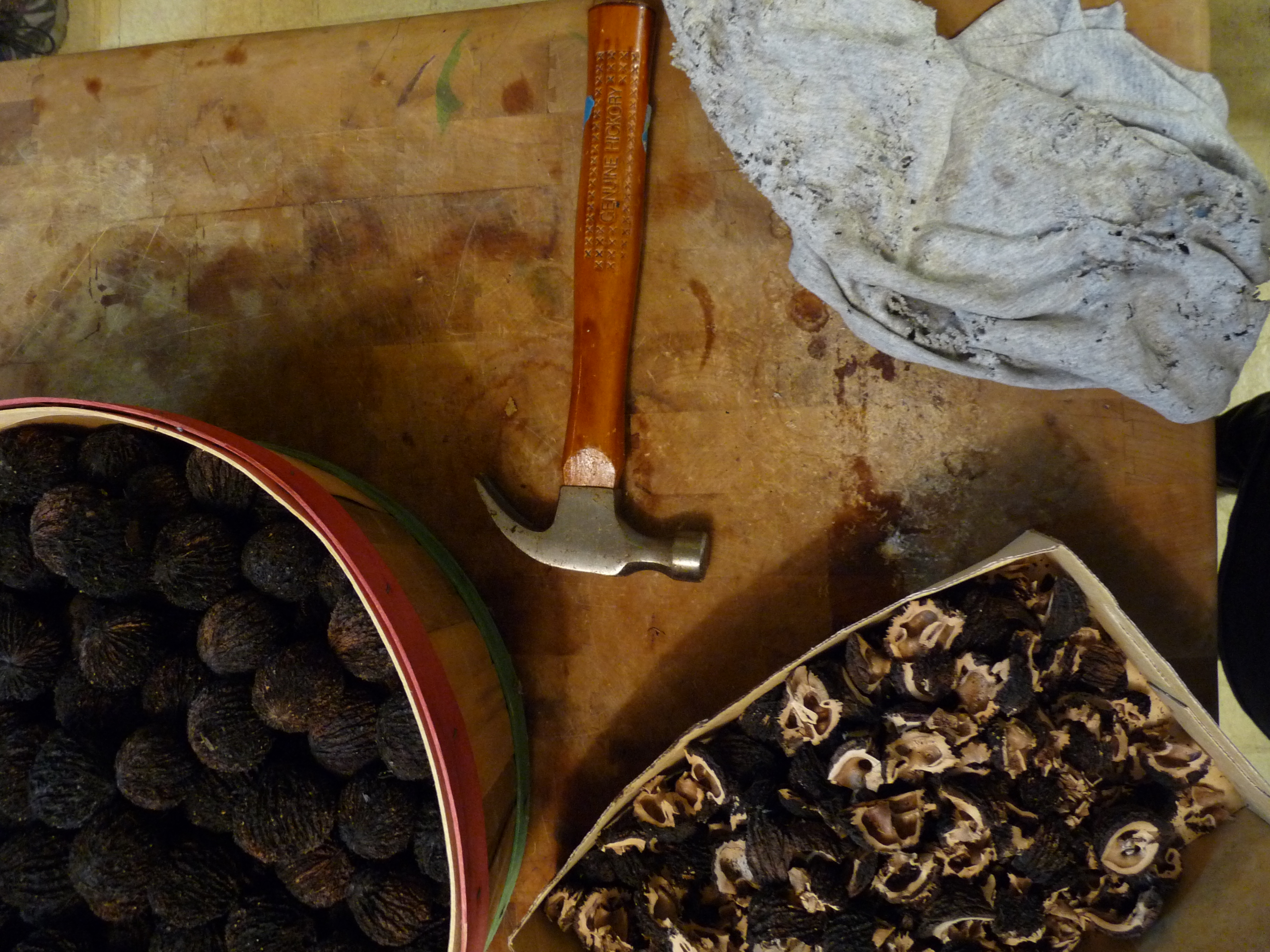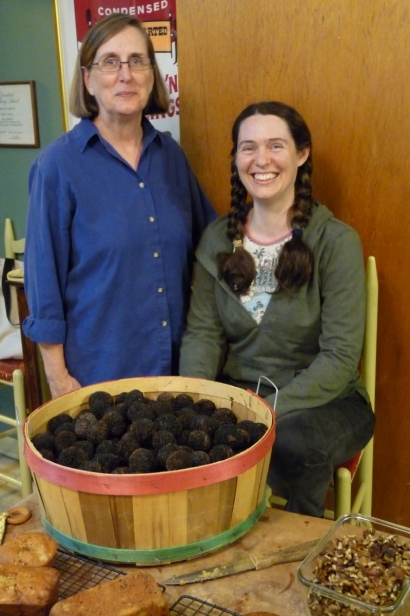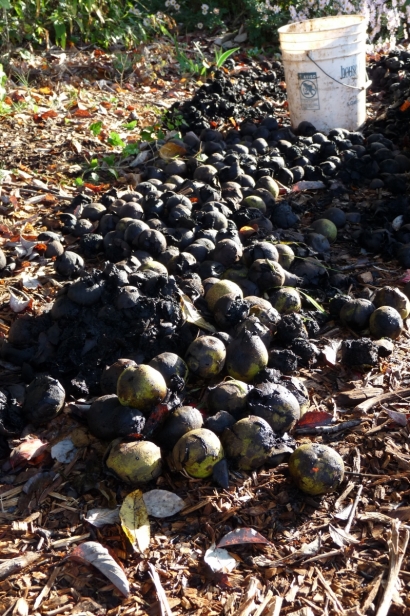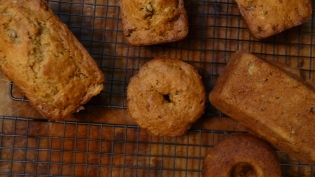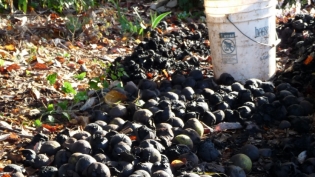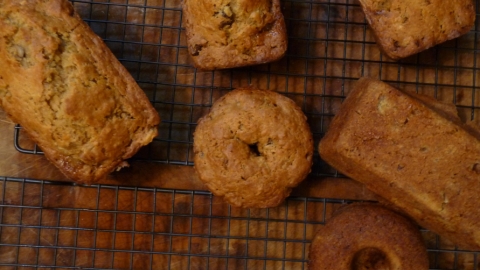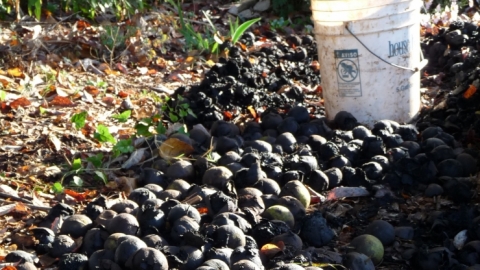Black Walnuts: A Tough Nut Worth Cracking
To get to the rich nutmeat inside you must remove two obstacles— a softball-sized hull so messy it is used to stain furniture, and a rock-hard shell you can drive your car over with no appreciable results. Oh, and there will be lots of ink and maggots.
A simple Google search will allow you to take the easy way out and purchase your black walnuts, but I’d like to encourage you to experience the colorful, labor-intensive process. If this were the pioneer days, it might be hard to justify the calories in vs. calories out (and the maggots), but hey, this is America. Our commodities are so easy to come by we have to pay gym memberships to make up for it. Foraging and cracking your ingredients means you can have your black walnut cake and eat it, too!
Before we go any further, I’ll reassure you that there will be no maggots in your nuts. They’re from the walnut husk fly and exist entirely outside the shell (and nothing is getting through that thing without special equipment or squirrel teeth). Some people claim the nuts aren’t worth eating once the maggots have gotten into the husk, but my family considers these insects a labor-saving part of the husking process.
I used to collect nuts from abandoned homesites until I advertised online that my family would be happy to “clean up” nuts from lawns where they are unwanted. Most people don’t want to fool with it and consider them lawn mower bombs. (They’re huge— a popular common name is “Jupiter’s balls.”) We found that homeowners with black walnut trees are just as happy for us to take them as we are to get them.
Last fall we filled my mom’s car trunk so full we could barely close it and almost regretted our success when we got them home. If you compare cracking a pecan to cracking a piece of driveway gravel (but imagine that you first have to remove the gravel from a stubborn husk and then dry cure it for a couple months), you’ll have the gist of it. There are many incarnations of both husk and shell removers on the internet. We find that an oyster knife and heavy gloves are our preferred husking method. My mom has turned wrapping the nut in a rag (to contain bursting shell bits) and popping it with a hammer into an art form. Her hefty antique butcher block bears scars on one corner from years of walnut harvests.
Once, a family friend witnessing this process exclaimed, “Wow! Why is it so hard? What on earth is that made of?”
“Wood,” we replied.
“Yes, but what are the shells made of?” she countered, unable to accept they weren’t something more substantial. The discarded bits are used commercially to polish stones and clean jet engines.
Herculean efforts like these are worth it for such an ambrosial food. Once you’ve ground these floral-flavored treats into hummus or pesto recipes, you can’t go back. They’re also the highest protein source in a tree nut and superior to fish oil for omega-3 fatty acids.
Black walnuts can be substituted for regular walnuts in any recipe, though some people mix the two to compensate for the black’s bolder flavor. They’re also available as extracts, oils, and even bitters— my husband and I just purchased a bottle of the latter from Kitchen Arts & Pottery in Downtown Greenville. It turns out black walnut bitters make a delectable cocktail with bourbon, club soda and a little maple syrup. If my writing didn’t convince you to harvest your own nuts, simply drink a few black walnut cocktails and read it again.


